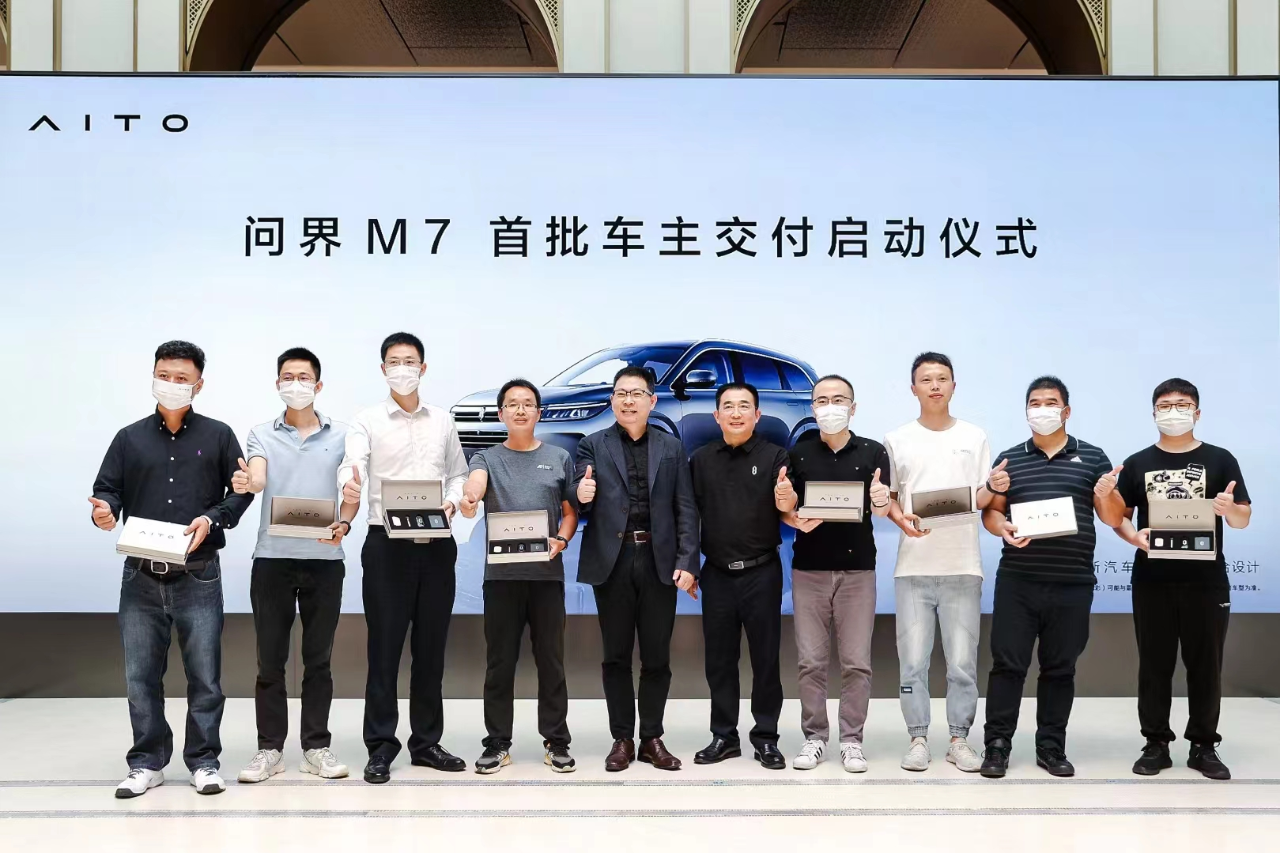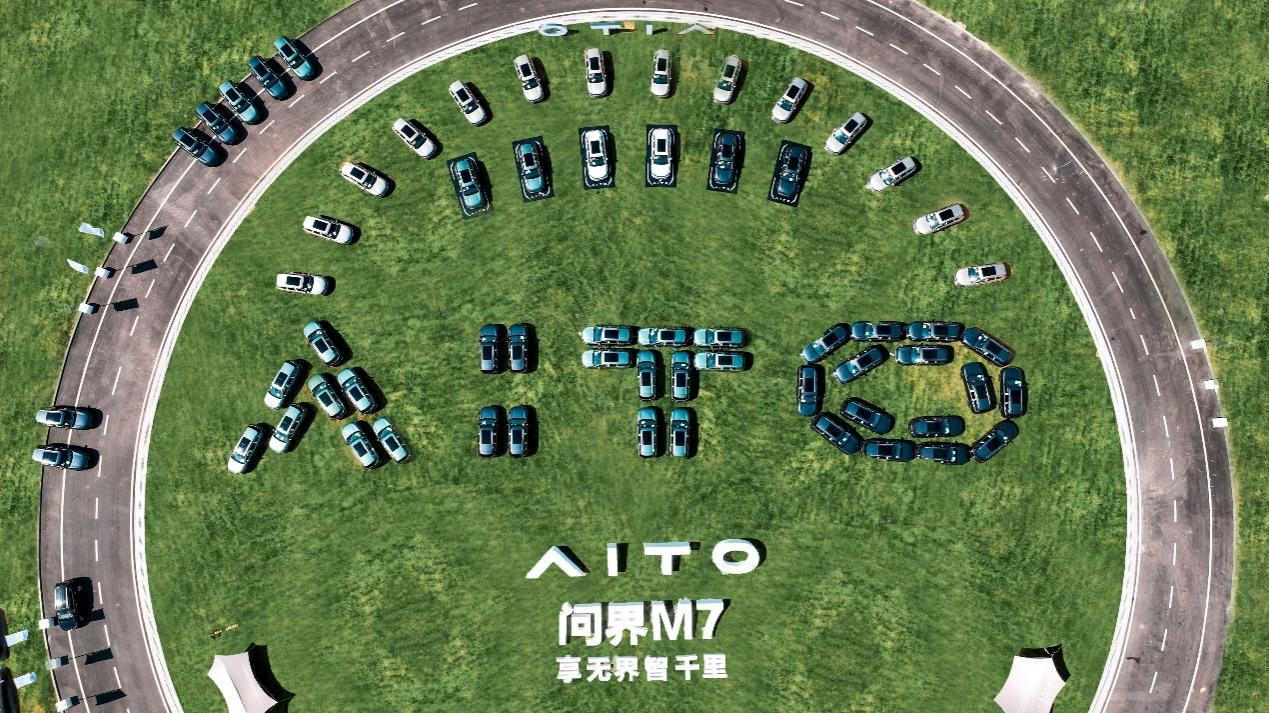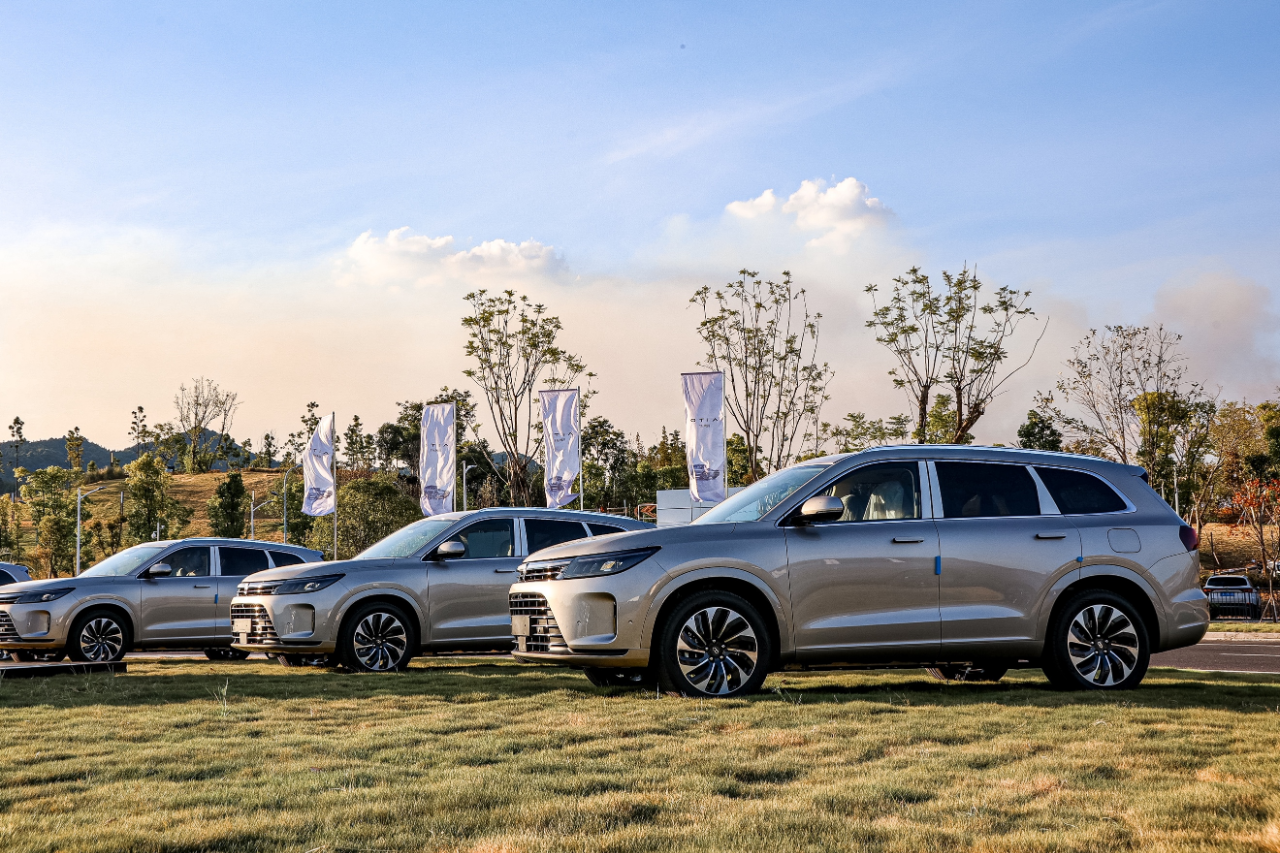Author | Nie Yiyao
The delivery time of AITO AITO M7, which was released only 51 days ago, has refreshed the industry record.
On August 24th, the first batch of owners of AITO AITO M7 were delivered simultaneously in Chongqing and Shenzhen. It has only been 51 days since its official release. Not only is AITO AITO M7 delivered quickly, but also its delivery time is only 4 months apart from AITO AITO M5, which was released on July 4th this year.
According to reports, the pure electric version of AITO AITO M5, called the AITO M5 EV, will also be officially launched on September 6th.
Fast delivery has become a typical label for the brand “AITO AITO” jointly created by Huawei and Cyrus. The cross-border joint production combination of Huawei and Cyrus, two internet and traditional automobile companies respectively, is also in the quick-cutting of the new energy vehicle lane achieved by AITO AITO M7, opening a new speed race of mutual achievements.
“Big Mouth” Boosts Sales, AITO AITO’s Sales Rapidly Rise
As expected, at the AITO AITO M7’s first owner delivery ceremony on August 24th, Yu Chengdong, Executive Director of Huawei, CEO of Terminal BG, and CEO of Intelligent Car Solutions BU, once again brought his new “golden sentence”:
“The disadvantage of AITO AITO is that the price is too cheap! Someone asked if it could be sold at a higher price? Because a higher price can reflect his identity. He used to drive cars worth one or two million and won’t buy something so cheap…”
“I replaced my BMW at home with AITO AITO M5 and replaced Porsche with M7. My friends who originally planned to buy models such as BMW X5, Mercedes-Benz GLS, and Porsche Cayenne have all turned to buy AITO.”
It can be seen that behind Yu’s plain confession is just to verify his previous statement that “the value of AITO AITO M5 is comparable to that of a million-dollar luxury car”, while AITO AITO M7 “completely exceeds a million-dollar luxury car”.
After praising the current models, Yu did not forget to hype the upcoming AITO AITO M5 EV, which will be officially launched on September 6th: “The AITO M5 EV is the SUV with the highest value in the world!”
As usual, Yu’s style once again pushed AITO AITO to a high point of discussion.

In fact, since the birth of the “AITO AITO” brand jointly created by Huawei and Cyrus at the end of last year, Yu Chengdong has never relaxed his efforts for AITO AITO.
On Weibo, out of the 89 Weibo posts visible in six months set by Yu Chengdong, 25 are for AITO AITO. In public occasions, Yu Chengdong dares to speak up and boast.Compared with other executives in the automotive industry, Zhang Xinghai, the chairman and founder of Sailesi Group, appears more reserved and introverted with his traditional approach and years of experience. He may only say plain things like, “We hope to let users experience the different travel experience of smart electric vehicles as soon as possible with the ultimate handling performance, convenient intelligence and flexible supplementary energy of Wanjie M7, and work hard to achieve the global dual-carbon goals, allowing more people to become advocates for environmentally friendly cars.”
However, with the marketing hype of Yu Chengdong’s “shocking statements” and Zhang Xinghai’s low-key existence as a vehicle maker, sales of AITO Wanjie M5 have started to increase rapidly, with M7’s order volume also being eye-catching.
According to Sailesi’s production and sales data released in July 2022, AITO Wanjie M5 sold 7807 units, a year-on-year increase of 8873.56%. In March of this year, AITO Wanjie M5 began delivery, with sales reaching 3045 units in that month. Since then, sales of AITO Wanjie M5 have continued to rise, with sales reaching 5033 units in May and 7021 units in June. By the end of July, cumulative sales of AITO Wanjie M5 had reached 26348 units.
While AITO Wanjie M5 opens an upward channel, AITO Wanjie M7’s market performance is also responding positively to Yu Chengdong’s marketing and confidence. On the day AITO Wanjie M7 was launched, orders exceeded 20,000 units within four hours. 72 hours later, orders exceeded 60,000 units.
There is not much time left for Yu Chengdong, and Zhang Xinghai is the same
Just a day before AITO Wanjie M7 began delivery, on the afternoon of August 23, an internal speech by Huawei founder Ren Zhengfei made headlines on social media.
In this article entitled “The company’s business policy should shift from pursuing scale to pursuing profit and cash flow,” Ren Zhengfei said that the global economy will face a decline and a decrease in consumption capacity, and that Huawei should change its thinking and business policy, from pursuing scale to pursuing profit and cash flow, in order to ensure survival through the next three years of crisis.
Just a few weeks ago, Huawei’s first-half 2022 performance showed that the company’s sales revenue was RMB 301.6 billion, down 5.87% year-on-year, and its net profit was RMB 15.08 billion, down 51.97% year-on-year, with net profit margin dropping to 5%.
Ren Zhengfei emphasized Huawei’s investment in smart cars in the future: “Intelligent car solutions cannot lay out a complete battle line, we should reduce scientific research budgets, strengthen the commercial closed loop, adopt a modular route in research and development, focus on a few key components, and connect the remaining parts with others.”Over the past few years, Huawei has invested heavily in the field of intelligent vehicles. Yu Chengdong once revealed that Huawei has directly invested 7,000 people and indirectly invested 10,000 people in the automotive field, spending tens of billions of dollars each year.
“This is a business that burns a lot of money and is difficult to do,” Yu Chengdong commented on the intelligent automotive business.
As the global economic winter approaches, Ren Zhengfei demands that Huawei “must survive and survive with quality.” The time for Yu Chengdong to invest in expanding the intelligent automotive industry at any cost is limited. For Huawei, the intelligent automotive business must enter the revenue-generating period.
As a company that “does not make cars but helps automakers make good cars,” how can Huawei realize revenue from its intelligent automotive business? There is only one answer: a large number of vehicles sold by cooperative automakers, and they must be vehicles that have been worked on by both parties.
Currently, although Huawei has deeply collaborated with Sagitar, BAIC’s Arcfox, and Avita, it is also the supplier of parts for GAC Aion and NIO vehicles. And recently, the Hongmeng OS vehicle system was installed on Beijing Automotive’s Magic Square and is about to be installed on Geometry vehicles. However, only AITO Wenchjie, which is jointly incubated by Huawei and Sagitar, is generating substantial revenue for Huawei’s intelligent automotive business.
Yu Chengdong may not be able to wait for other cooperative brands to skyrocket in sales, but AITO Wenchjie, which represents a glimmer of hope in this regard, is still an object worthy of his all-out efforts.
Similarly, Zhang Xinghai’s opportunity may also lie in this battle.
Before this, Sagitar’s twists and turns in both domestic and foreign new energy vehicle tracks need not be mentioned. Only the crowded new energy vehicle track, the closing time window, and the increasing number of competing products from rival companies are enough to make Sagitar do everything it can to win this battle.
With the intelligent cabin and automatic driving functions that Huawei has given AITO Wenchjie, coupled with its excellent human-machine interaction and intelligent driving experience, Sagitar focuses more on AITO Wenchjie’s vehicle platform, three-electric technology, manufacturing process, and quality control.
Sagitar is obviously working with Huawei to push AITO Wenchjie to the center of the new energy vehicle stage. In addition to the Liangjiang Intelligent Factory, Sagitar has also built a mid-to-high-end intelligent networked automobile manufacturing base – the Phoenix Intelligence Factory – which conforms to the Industry 4.0 standards and combines intelligentization, digitization, and flexibility.
Currently, the Phoenix Intelligent Factory has completed the initial preparatory work for AITO Wenchjie M7. Expanding production capacity through building new factories is clearly preparing for the future delivery of AITO Wenchjie M7.After all, one must make adequate preparation before going to war. Only by making every effort to continue to increase the sales volume of the AITO brand can a foundation for further development be established.
Integration of AITO, May Become a Cross-border Example in the Automotive Industry
Yu Chengdong has expressed his sales expectations and prospects for AITO on several occasions. Although there is still a certain gap between reality and ideals, it is evident that AITO is developing well in a complex and unfavorable external environment.
Will AITO become a leading brand in the new energy vehicle market? It remains to be seen. However, judging from the status and trend of the integration of Huawei and Seres, the cooperation of the two is almost perfect and the effect has been proven to be good.
On the one hand, Huawei is strongly leading AITO, not only in terms of hardware and software components, but also in terms of car design, brand building, and marketing, where Huawei is deeply involved, exerting its advantages and influence. Yu Chengdong has also taken the stage and spared no effort in promoting and publicizing the brand.
On the other hand, Seres understands its own strengths and weaknesses, knowing how to take advantage of the opportunity and go with the trend, willingly letting the more influential side stand before the public, while focusing on what it is good at.

Whether high-profile or low-key, on stage or behind the scenes, the tacit cooperation between the two companies allows Huawei’s car-making dream to “provably create value,” allowing Seres to catch the tide of smart cars, from complete obscurity to being recognized by consumers and capital markets. Customers can experience the combination of the strengths of Huawei and Seres through the products of AITO, thereby enjoying the usage effect of 1+1>2.
To some extent, the deep cross-border cooperation between Huawei and Seres has opened up a win-win situation, which is rare in itself. If the sales volume of AITO continues to improve, this cooperation will become a successful example of cross-border carmaking, worthy of further research and exploration by the industry.
With more AITO brand products being delivered and launched, the AITO channel network is rapidly expanding into more cities. As of August this year, AITO had covered 171 cities, with more than 700 user centers and experience centers completed. By the end of 2022, Seres plans to expand the number of experience and user centers to more than 1,200 stores, further enhancing channel service capabilities.
It is clear that Huawei and Seres are exerting their full strength to promote the development of AITO.
This article is a translation by ChatGPT of a Chinese report from 42HOW. If you have any questions about it, please email bd@42how.com.
